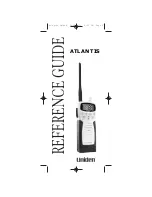
Description and Operation
Setup and Survey
Differential GPS (DGPS) Surveying
33
www.javad.com
point, and each subsequent point, the receiver is changed to static mode to collect data. So, while moving,
the Rover is in kinematic mode, and while collecting data, the Rover is in static mode.
1. Set up the Rover at an unknown point and press power. Allow the Rover to collect static data for
two to ten minutes.
2. When finished, assign the Rover to kinematic.
3. Move the Rover to the next location (survey point), and collect the data in static mode for two to
ten minutes.
4. Repeat steps until all points have been surveyed. The occupation time for the points depends on
the same factors as for the static survey method.
5. When finished, stop logging data. Turn off the Rover if needed. This method of GNSS survey
allows the operator to reduce the point occupation time, thus permitting field crews to survey
many more points compared to the other methods available.
6.4. Differential GPS (DGPS) Surveying
Differential GPS is a data collection technique that uses an extra GPS receiver and some complex
calculations to increase the accuracy of GPS positions. It is based on the fact that any pseudorange errors
in a GPS signal are common to all receivers within a radius of several hundred miles. Differential GPS
can provide accuracies from submeter to around five meters. Without differential correction accuracy
may only be within 100 meters CEP.
The extra receiver, known as the base station, is placed on a known reference position. It receives GPS
data from all satellites in view. One or more rover receivers collect GPS data at unknown locations using
some of the same satellites that the base is receiving data from. Differential correction then compares the
base station data with the known base station location and computes the error associated with each
satellite pseudorange. This error is used to correct the rover positions, improving their accuracy.
Differential GPS corrections can be applied at the time the data is being collected in the field (real-time
differential GPS using radios). Differential corrections can also be applied in the office once the rover and
base station files are transferred to your office computer. This is called post processed differential
correction and is carried out by the Differential Correction utility.
Содержание GISmore
Страница 2: ...www javad com ...
Страница 48: ...Safety Warnings Storage Precautions 48 www javad com ...
















































